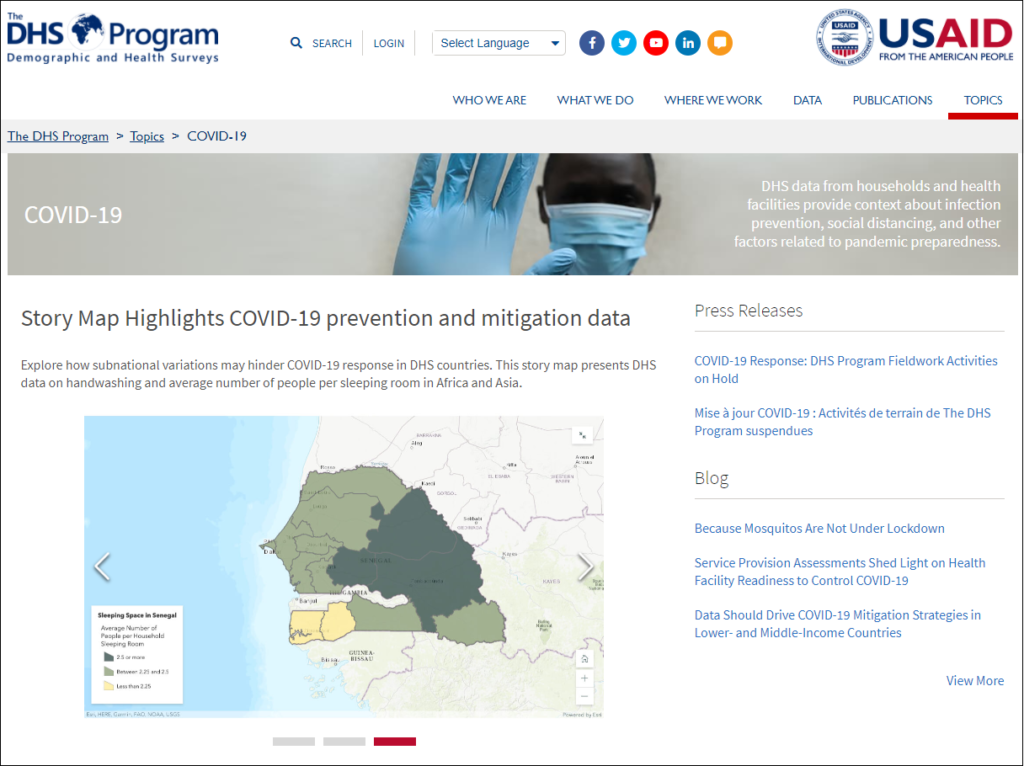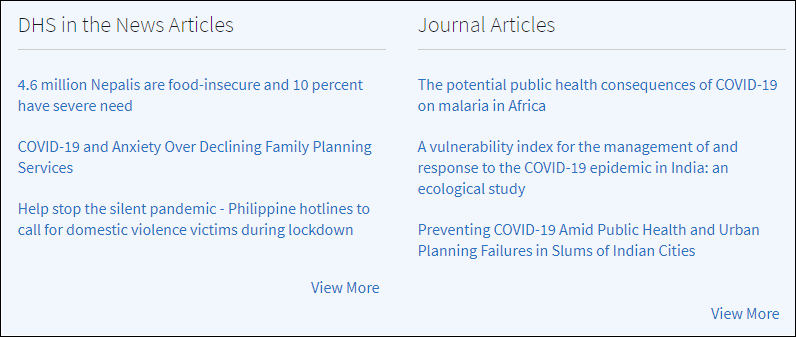COVID-19 and The DHS Program: A New Web Hub for Up-to-Date Information

Even though COVID-19 has paused survey fieldwork and kept DHS Program staff from traveling, DHS data continue to inform the COVID-19 conversation around the world. The just-launched COVID-19 feature page on The DHS Program website provides a hub for all of this essential information.

This new page features the tools released this year by The DHS Program to support the use of DHS COVID-19-related data:
- The STATcompiler now has “COVID-19 Prevention” and “COVID-19 Additional Factors” tagged indicators including handwashing, household size, multi-generational households, and number of people sharing a sleeping room.
- Our StoryMap on availability of handwashing facilities and sleeping space allows users to explore national and subnational variation in these infection-prevention measures.
- SPA data on health facility readiness to manage infection control, diagnose respiratory infections, and provide treatment were compiled in a new publication.
The global community relies on DHS data in their work to understand COVID-19, and we are eager to share those resources. The new web hub provides frequently updated news and journal articles that feature DHS data. These articles highlight the broad impact of COVID-19. The effects of lockdowns, social distancing, and isolation are far-reaching and have caused great concern in the global health community. DHS data help to contextualize these other effects of the pandemic: food insecurity in Nepal, concerns about the impact of COVID-19 on family planning use in Nigeria, and an increase in domestic violence in the Philippines are just a few examples. The journal articles feed lists COVID-19-related peer-reviewed journal articles that use DHS data. Recently posted articles cover the public health consequences of COVID-19 on malaria in Africa (Nature Medicine), preventing COVID-19 in Indian slums (World Medical and Health Policy), and a vulnerability index for COVID-19 in India (Lancet Global Health).
Finally, the COVID-19 feature page will be home to any COVID-19-related press releases issued by The DHS Program. This is where you can find more detailed information about the status of survey operations, including plans for returning to the field and adjusted survey timelines.
Featured Image © Marina, stock.adobe.com


